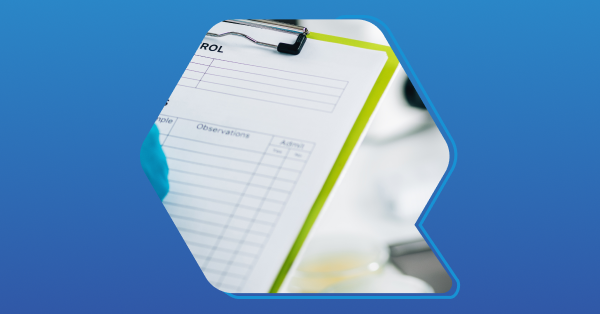What Every Lab Needs to Know About Data Integrity

According to an analysis of FDA Warning Letters in 2021, the top contributors to data integrity failures in labs were:
- Original data: 30% (this refers to ensuring that data is attributable, original, and accurate)
- Data manipulation: 25%
- Poor system controls: 14%
- Data destruction: 13.5%
Frustratingly enough, each of these failures is entirely preventable. All that is required is good data management and data integrity practices.
Can it be so simple? In this article, we’ll break down what data integrity means for labs, how to implement best practices, and which software platforms can help automate and speed up processes to maintain data while saving your staff time.
What is Data Integrity?
Data integrity is the practice of ensuring that all information in your lab is consistent, complete, and accurate.
This is a core competency of any functioning lab. The data lifecycle – spanning from creation to processing, review, reporting, use, retention, and eventual destruction – demands careful oversight at each stage to uphold integrity. Maintaining data integrity also includes keeping an audit trail of any changes in the event data is modified.
How can your lab ensure it maintains data integrity? Adhere to the following:
- Ensure data is retrievable and identifiable
- Ensure data can be attributed to a specific subject
- Maintain clear audit trails that identify who altered the data, why it was altered, and when
- Document steps and processes to reconstruct tests or trials
Read on as we break down specifics and share best practices for ensuring data integrity in your lab.
The ALCOA PLUS Framework for Data Integrity
Beyond the high-level characteristics above, the ALCOA PLUS (+) may be helpful in guiding your lab to maintain data integrity best practices.
The ALCOA PLUS framework is widely used in industries like pharmaceuticals, biotechnology, and healthcare to protect data integrity, quality, and reliability. That’s because it plays a key role in helping these labs meet GxP standards.
There are two pieces to this framework:
ALCOA: ALCOA represents the core principles of data integrity. This means guaranteeing that data is:
- Attributable: Record who performed the action and when
- Legible: All data is readable across all lifecycles
- Contemporaneous: Data is recorded at the time of the activity
- Original: Raw data is preserved in its original format
- Accurate: Data is free of errors and reflects what was observed
PLUS: PLUS elements provide added layers to further strengthen data management. This means ensuring that data is:
- Complete: All data must be recorded, including any repeat tests
- Consistent: Data entries should follow a consistent format
- Enduring: Data must be maintained in a durable format
- Available: Data must be readily accessible for audit or inspection
Meeting these standards can be difficult (or next to impossible) manually but specialized tools and software can help. Next, we’ll share the consequences of failing to maintain data integrity and then share tools your lab can use to manage its data.
Why Data Integrity Matters: The Cost of Poor Data Integrity
If you think data integrity is just about regulatory checkboxes, think again. Here’s how small errors cascade into significant damage down the road. According to the “1-10-100 rule” developed by authors George Labovitz and Yu Sang Chang in the 1990s, if it costs your lab $1 to fix a data entry error as soon as it’s made, it will cost $10 at the next step in the process, and if the error persists and becomes part of an analytical sample report, it will cost $100 to fix.
Beyond this “napkin math” calculation, there are real consequences and downstream effects to even the most seemingly innocuous error.
Financial
It’s estimated that up to 42% of your staff’s time is spent on manual paperwork and administrative tasks. Supposing a base salary of $52,000, this means that manual data entry likely costs your lab around $22,000 per staff member. As your lab scales, the financial burden of manual data entry (and the added time to fix errors) increases.
Compliance
Data integrity errors can put you at serious risk of failing to meet compliance regulations.
Issues caused by poor data integrity can trigger regulatory inspections, requiring extensive corrective action plans and possibly external consultants. Regulatory bodies may increase inspection frequency or require additional documentation, creating ongoing compliance burdens. In severe cases, your lab can lose its certification status.
Legal
If your lab deals with patient data or manufactures products, data integrity issues could put you at risk of liability claims and litigation expenses. These costs include attorney fees, settlements, court expenses, and increased insurance premiums. Errors can invalidate studies and create liability issues with research sponsors.
Reputational Damage
Legal complications can lead to reputational damage as well.
Compromised or inaccurate data can lead to misinformation, flawed decisions, and ultimately reputational damage when stakeholders lose confidence in an organization’s reliability. For consumers, trust hinges on knowing their data is accurate, protected, and ethically used, and any breach of that trust can erode loyalty and hamper growth.
Tips to Ensure Data Integrity in Your Lab
While the stakes are high, ensuring data integrity can be a simple process for your lab – if you make a consistent effort.
The following best practices will help ensure your lab’s data integrity:
- Create and implement SOPs: Data integrity starts with detailed and properly implemented standard operating procedures (SOPs). These procedures should follow industry standards and be accessible to all staff.
- Define clear roles and responsibilities: Assign specific team members to manage and update data policies. Having clearly defined roles ensures accountability and consistent data management practices.
- Conduct regular audits: Schedule systematic reviews of your data collection, storage, and handling processes. These audits should verify compliance with established protocols, identify potential vulnerabilities, and ensure all team members are following proper documentation practices.
- Standardize data collection: Wherever possible, automate data capture from all instruments and software to remove human error and save staff time. This brings your data under one roof, preventing duplicate or conflicting records.
- Automate what you can: Implement automated data collection and validation systems wherever possible. Automation reduces human error, provides consistent time-stamping, creates reliable audit trails, and ensures data is captured in a standardized format that maintains integrity throughout the workflow.
- Leverage technology to minimize errors: Rather than relying on manual methods and human error, leverage software to digitize your lab’s data and operations. Software like an ELN or LIMS can help you streamline data collection, audit changes, and manage backups.
Next, we’ll share the top software tools your lab can use to maintain data integrity.
Tools to Help Maintain Data Integrity
There are two broad groups of tools that we'd recommend to improve data integrity in your lab:
- ELN: An ELN (Electronic Lab Notebook) is a digital version of a lab notebook; it can be used to document tests, log data, and collaborate with your team. While ELNs can be a good entry into using software to digitize your lab, ELNs may lack more advanced features for data management and will lack compliance features to support QA/QC.
- LIMS: A LIMS (Lab Information Management System) is a robust software platform to digitize and automate your lab. A LIMS can automate data capture, track samples and inventory throughout your lab, integrate with instruments and other software, and offer access controls and data backups to secure your data.
Between an ELN and a LIMS, we recommend a LIMS as the best software to help maintain data integrity and prevent errors. A LIMS can help your lab secure and manage its data through the following:
- Access controls and audit trails: Thanks to role-based access, LIMS users can be assigned specific roles that only allow them to access certain data. This prevents unauthorized access and minimizes the risk of data breaches. With audit trails, you can also view a record of all users who accessed the LIMS and what actions they performed.
- Automation to reduce manual input errors: To ensure data integrity, LIMS often includes data validation features that check for errors or inconsistencies in data entry. This helps prevent accidental data corruption and ensures that the data remains accurate and reliable for analysis and decision-making.
- Compliance with key regulations: LIMS are designed with regulatory compliance in mind, incorporating features that support adherence to data protection and privacy laws, such as HIPAA, GDPR, and other relevant standards or regulations. This includes managing consent where necessary, ensuring data minimization, and providing the necessary controls for data subjects' rights.
Of the platforms available, there is nothing better suited to helping your lab maintain data integrity than a LIMS.
Download the Compliance Guide
Data integrity is just one piece of a functioning and compliant lab. Laboratory compliance requires even more preparation and proactive oversight.
Whether you’re preparing to pass inspection or worried about a surprise audit, click the button below to download our lab compliance guide. In this guide, we break down the most common regulations you will encounter, best practices for meeting them, and guidance on software and tools you can use.








